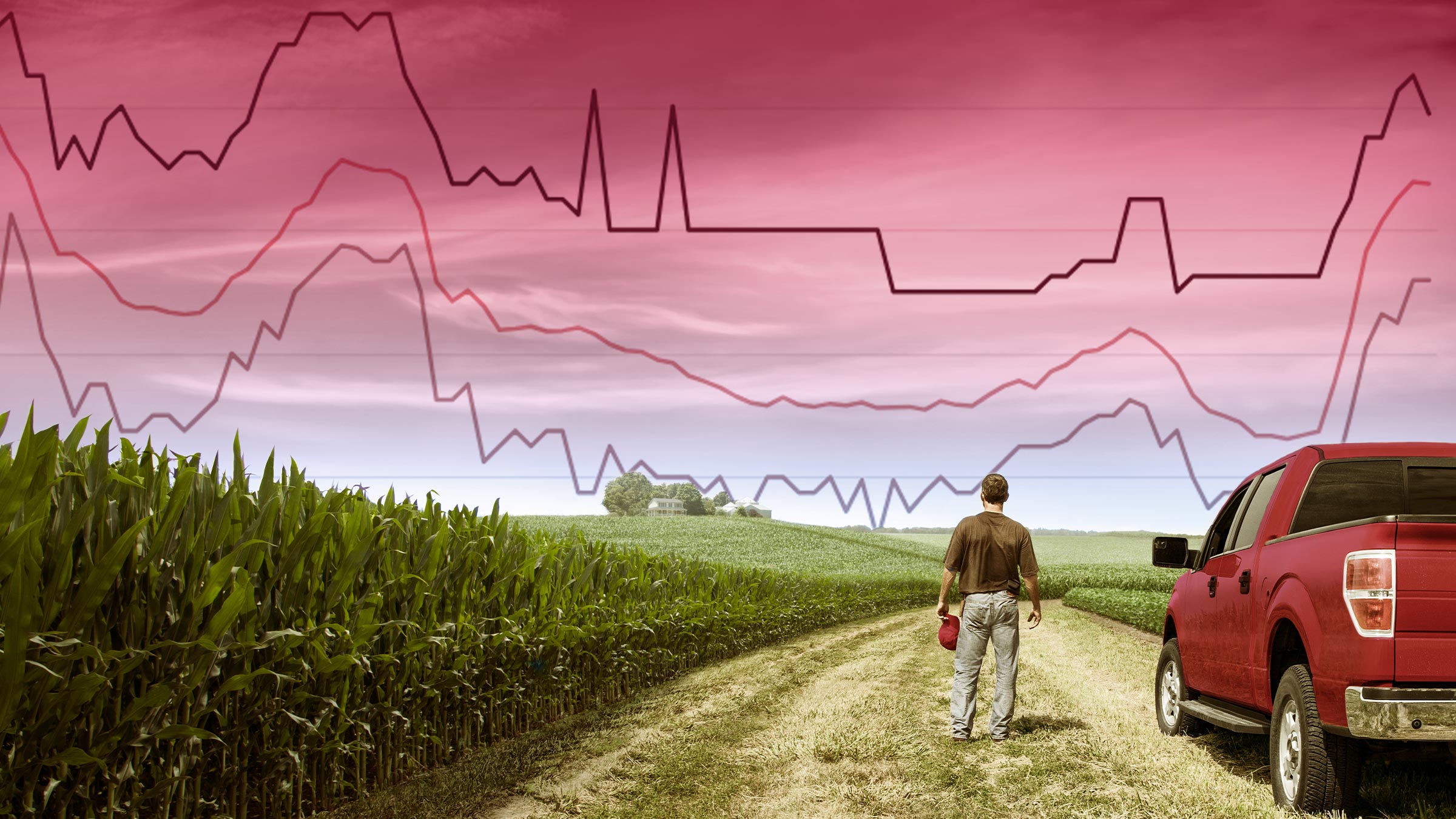Interest rates are an important factor of agricultural production management. Low and stable interest rates allow for more predictable borrowing and investment costs for producers. They also correspond to lower debt service requirements, which can make long-term strategic decisions, such as buying land or making capital improvements, seem like an easier choice.
Rapidly rising interest rates, however, can have profoundly negative financial impacts on both individual producers and the entire ag sector (for example, the farm debt crisis of the 1980s), especially since interest rates tied to ag production reprice each year. After more than a decade of low and stable interest rates, rising interest rates are challenging ag borrowers, who first experienced higher interest rates during the 2023 renewal season. We will examine the impact of elevated interest rates on ag borrowers in a series of articles. This first article on ag borrowing uses bank call report and banker survey data to examine how elevated interest rates will affect the ag production loan portfolio in the Ninth District.1 The second article of this series will focus on how elevated interest rates impact highly leveraged producers.
Interest rates are at their highest in over 15 years
Figure 1 shows the two decades of operating line of credit (LOC) interest rates charged to ag borrowers throughout the district. Since hitting lows in the third quarter of 2021, interest rates have increased rapidly, almost doubling in two years. As of the fourth-quarter 2023 survey, the average interest rate for an operating LOC is well above the long-term survey average of 6.5 percent and is quickly approaching 9 percent. The average interest rate reported for an operating LOC rate hasn’t been this high since the mid-2000s.
Not all borrowers receive the average interest rate; rates for each ag borrower vary due to the borrower’s creditworthiness. Borrowers representing a greater credit risk tend to receive a higher interest rate. These borrowers are already financially vulnerable due to higher debt levels, meaning that higher-than-average interest rates add additional burden to their already elevated interest expenses. This topic will be explored in the next article of this series.
Interest costs increased $350 million in 2023
Most ag producers monitor farm operating expenses to keep LOC balances from significantly increasing. However, in this period of elevated rates, they are still having to service significantly more interest expense. This is because controlling LOC balances is only one part of the interest expense, which equals the LOC balance multiplied by the interest rate and loan term.2 For this analysis, we use the debt expense formula for individual producers to estimate total interest expense for total ag production loans in the Ninth District. By using the average interest rate from the quarterly ag credit conditions survey and applying that rate to the average annual balance of LOCs, we estimate the total interest expense for the year.3 Figure 2 includes this data for the last 11 calendar years.
Total interest expenses increased substantially in 2023 throughout the entire district. Ag producers borrowing at community banks in the district paid an estimated $842 million in interest expenses on operating LOCs in 2023—an increase of $353 million from the 2022 calendar year. Though a small part of the interest expense increase is from the higher estimated average loan balance in 2023, the higher interest rate accounts for $313 million (84 percent) of the increased interest expense for the year (Figure 3).
| LOC balance | Average interest rate | Annual interest paid | Dollar change from year prior | Percent change from year prior | |
|---|---|---|---|---|---|
| 2021 | $8,876 | 4.7% | $415 | ($91) | -18.0% |
| 2022 | $8,836 | 5.5% | $489 | $74 | 18.0% |
| 2023 | $9,890 | 8.5% | $842 | $353 | 72.2% |
Interest rates have increased, but have they peaked?
We have seen operating LOC interest rates increase during the 2022 and 2023 renewal seasons, increasing from 4.7 to 8.5 percent. Renewal season has started for 2024, and, with rates remaining elevated, ag producers will continue to see high rates for their 2024 operating LOCs.
Conclusion
The purpose of this article was to discuss the impact of elevated interest rates on the annual debt service expense for individual ag producers and for the Ninth District more broadly. Higher debt service, driven by elevated rates, makes it critically important for ag producers to aggressively manage farm expenses to preserve profitability. This is true for all borrowers but will be most critical for highly leveraged borrowers that are in a less resilient financial position.
In the next article, we will explain the characteristics of these highly leveraged ag producers and further explore why they are especially vulnerable in the current operating environment.
Endnotes
1 The Federal Reserve Bank of Minneapolis reviews results of the ag credit conditions quarterly. The survey includes a sample of banks that actively originate ag-related loans and are knowledgeable about ag markets in their market areas. The survey is not scientific but is more like a panel of experts offering information.
2 Not all operating lines of credit follow these loan terms for calculating interest. Loan terms are unique to the lending policies of the institution and the credit characteristics of the borrower. This calculation assumes that the borrower only pays interest at loan maturity. In some cases, the borrower pays interest quarterly or semiannually on outstanding balances, which would result in a different interest expense total.
3 The author used the 2023 second-quarter interest rate because the second quarter is generally the most active quarter for operating loan renewal in the district. Interest rate data are from the Federal Reserve Bank of Minneapolis’ quarterly survey of ag credit conditions.






